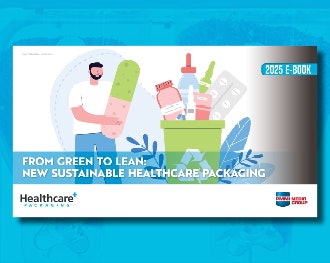
Key Takeaways:
· Overlooking packaging during a product launch can cause costly delays and even derail a launch.
· Packaging for sterile medical devices is a specialized discipline that involves engineering, testing, sterilization, labeling, and regulatory compliance.
· Bring packaging engineers into cross-functional discussions well before commercialization.
When healthcare startups set out to disrupt the market, their eyes are fixed on the star of the show: the device. From breakthrough surgical tools to next-gen diagnostics, entrepreneurs pour their energy into refining the product, securing funding, and proving clinical efficacy. Yet too often, the unsung hero of commercialization—packaging—is overlooked. And that can be a costly mistake.
“Early-stage companies are thinking about the device, about fundraising, about clinical trials. Packaging isn’t intentionally ignored—it’s just not top of mind,” says Jen Goff, Chief Commercial Officer at Packaging Compliance Labs (PCL). “But overlooking it can cause costly delays and even derail a launch.”
Goff, a longtime packaging engineer turned commercial leader, has seen firsthand how startups stumble when they treat packaging as an afterthought. Her advice? Build packaging into the process early—or risk sleepless nights, ballooning budgets, and regulatory roadblocks.
Why Packaging Falls Through the Cracks
It’s not just startups that overlook packaging, Goff stresses. Even global manufacturers have been guilty of treating it as a “late-stage checkbox.” But smaller companies lack the deep resources to recover from mistakes, making the consequences far greater.
One issue is that many people simply don’t realize packaging is more than “just putting it in a box and shipping it.” Packaging for sterile medical devices is a specialized discipline that involves engineering, testing, sterilization, labeling, regulatory compliance, and, ultimately, patient safety.
“Not every university has a packaging program,” Goff explains. “So, unless you’ve worked closely with it, you wouldn’t know it’s an entire field. But in healthcare, it can make or break your market entry.”
Common mistakes made with regards to packaging fall into two main buckets: timelines and budgets.
“Packaging takes time,” she says. “Shelf-life studies, transit testing, functionality validation—those don’t happen overnight. If a company waits until the device is ready to think about packaging, they’ve already lost precious months.”
Budgeting mistakes can be just as damaging. Without line items for packaging engineering and testing, startups scramble to cut corners—sometimes forcing devices into pouches or materials that aren’t robust enough.
“I’ve seen companies resist trays because of cost and time. Then they end up failing test after test trying to force the device into a pouch,” Goff recalls. “In the end, they spent more money, lost more time, and frustrated investors.”
The result? Failed tests, launch delays, spiraling expenses, and, in worst cases, regulatory setbacks.
Warning Signs Packaging Could Derail a Launch
Goff outlines four “red flags” that companies should watch for:
- “We’ll figure it out later.” A dangerous mindset if carried too far into development.
- No feasibility testing. Skipping early package-device compatibility checks.
- Relying on contract manufacturers. Device makers may excel at production but often lack packaging expertise.
- No packaging budget. A missing line item signals bigger problems ahead.
“These aren’t just technical oversights,” Goff says. “They’re organizational blind spots that can cost months of revenue opportunity. If you’re hearing those phrases late in development, it’s time to hit pause and rethink.”
Why Everyone—Not Just Engineers—Should Care
Unlike consumer goods, medical device packaging doesn’t sit on shelves to woo buyers. But Goff insists packaging still plays a powerful commercial role.
“Packaging influences the clinician’s experience,” she says. “The way it opens in the operating room, how it’s stored, how it’s labeled—all of that creates brand credibility and can even be a competitive advantage.”
Ultimately, companies should know that the right packaging can solve a problem; it's never just about the device. But the whole company needs to buy-in on this idea. From sales and marketing to regulatory and operations, she argues, every stakeholder should recognize the importance of packaging.
As Goff puts it, “The device plus the packaging equals the product.”
The case for early investment in packaging is both practical and financial. Companies that plan upfront avoid expensive recalls, rework, and regulatory delays.
“It’s cost avoidance,” Goff explains. “You can spend a little early—or you can spend a lot later in failed tests, rushed validations, or regulatory pushback. The difference can be thousands—or millions.”
Goff distills her guidance into three actionable steps for startups:
- Find a trusted partner. Most startups don’t employ packaging engineers. Partner with experienced labs or consultants early.
- Build packaging into design inputs. Include user needs and packaging requirements in the design history file from the start.
- Involve experts early. Bring packaging engineers into cross-functional discussions well before commercialization.
“Find a trusted partner early,” says Goff. “Ask who others are using. Make that call. At the end of the day, everyone’s grinding toward the same goal—advancing health care and keeping patients safe.”





















